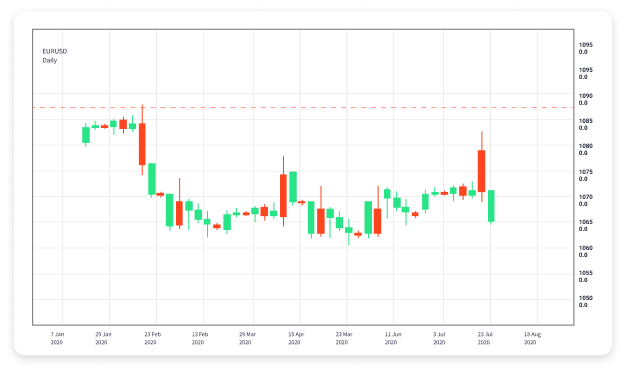
The Forex market, or foreign exchange market, is the largest and most liquid financial market in the world, where trillions of dollars are traded daily. It offers ample opportunities for traders, providing the potential for significant profits. However, success in Forex trading isn’t merely about having access to this vast market; it requires understanding, strategy, and discipline. In this guide, we will explore various aspects of Forex trading, including effective strategies, market analysis, and the importance of choosing the right forex and trading Forex Brokers in Cambodia.
Understanding Forex Trading
Forex trading involves buying one currency while simultaneously selling another, which is done in currency pairs such as EUR/USD or GBP/JPY. The primary goal is to profit from changes in currency value. The Forex market operates 24 hours a day, five days a week, providing traders with the flexibility to engage at any time.
The Basics of Forex Trading
Before delving into strategies, it’s essential to understand some fundamental concepts in Forex trading. Key components include:
- Currency Pairs: Currency pairs are categorized into major, minor, and exotic pairs. Major pairs are the most traded and include pairs like EUR/USD and USD/JPY.
- Pips: A pip is the smallest price change that a given exchange rate can make, typically based on market convention.
- Leverage: Leverage allows traders to control larger positions with smaller amounts of capital, amplifying both potential profits and losses.
- Spread: The spread is the difference between the bid price and the ask price of a currency pair.
Importance of Market Analysis
Effective market analysis is crucial for successful Forex trading. There are two primary types of analysis traders rely on:
1. Fundamental Analysis
Fundamental analysis involves evaluating economic indicators, news events, and geopolitical developments that can impact currency values. Key indicators include:
- Interest rates
- Inflation rates
- Employment statistics
- Economic growth rates
By understanding these factors, traders can anticipate potential market movements and make informed trading decisions.
2. Technical Analysis

Technical analysis focuses on historical price movements and patterns, utilizing charts and various indicators to predict future price action. Commonly used tools include:
- Moving Averages
- Relative Strength Index (RSI)
- Stochastic Oscillator
- Bollinger Bands
Traders often combine both fundamental and technical analysis to develop a more comprehensive trading strategy.
Developing a Trading Strategy
Having a well-defined trading strategy is essential for consistency and risk management. Here are some key elements to consider while crafting your strategy:
1. Set Goals
Define your financial goals clearly. Determine how much you wish to make in a specific time frame and outline the level of risk you are willing to take.
2. Risk Management
Successful traders prioritize risk management to protect their capital. Common techniques include setting stop-loss orders to limit potential losses and ensuring that no single trade risk exceeds a predetermined percentage of your total capital.
3. Keep a Trading Journal
Maintain a trading journal to track your trades, strategies, and emotions. This practice can help identify patterns in your trading behavior and areas for improvement.
4. Continuous Learning
The Forex market is ever-evolving, and successful traders continuously learn and adapt. Participate in webinars, read books, and engage with trading communities to improve your trading skills and knowledge.
Choosing a Forex Broker

Selecting the right Forex broker can significantly impact your trading success. When evaluating brokers, consider the following:
- Regulation: Ensure the broker is regulated by a reputable authority to provide a level of security and reliability.
- Trading Platforms: Assess the trading platforms offered by the broker, focusing on features, ease of use, and tools available for analysis.
- Fees and Spreads: Compare trading costs, including spreads, commissions, and overnight fees.
- Customer Support: Reliable customer support is essential, especially for resolving issues that may arise during trading.
Common Trading Strategies
Here are some popular Forex trading strategies that traders employ:
1. Day Trading
Day trading involves making multiple trades within a single day, with positions opened and closed before the market closes. This strategy relies heavily on technical analysis and short-term market movements.
2. Swing Trading
Swing traders hold positions for several days to weeks, capitalizing on expected short-term price movements. This strategy suits those who may not have the time to monitor the markets constantly.
3. Scalping
Scalping involves making numerous trades throughout the day, seeking small price gaps. Scalpers rely on quick decision-making and a tight spread.
4. Position Trading
Position trading is a long-term strategy where traders hold positions for months or even years. This approach typically relies on fundamental analysis and significant economic changes.
Conclusion
Forex trading offers a wealth of opportunities, but success requires strategy, continuous learning, and disciplined risk management. By understanding the fundamental principles, developing a solid trading plan, and choosing the right broker, traders can navigate the complexities of the Forex market. Whether you are a novice or experienced trader, always strive to enhance your skills and adapt to market changes. The journey to mastery in Forex trading is ongoing, but with determination and the right approach, you can achieve your trading goals.